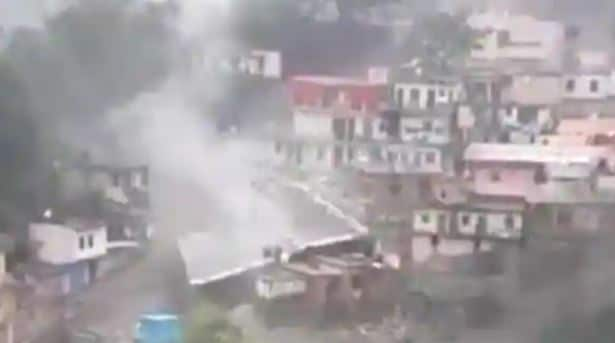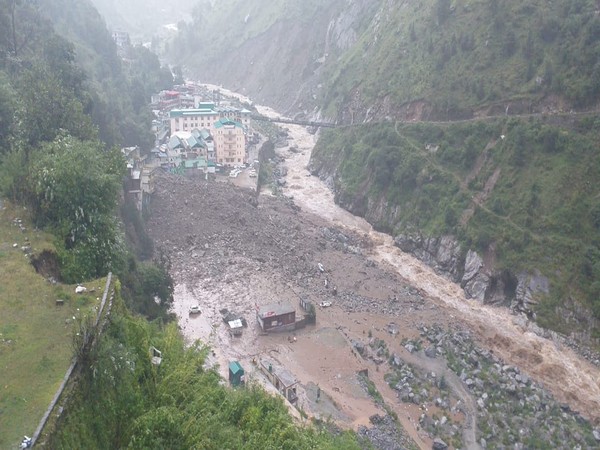
Local villagers have suffered losses worth lakhs. Meanwhile, the same day a flash flood was also reported in Nandprayag in Tehri, followed by Kainchi Dham in district Nainital. “The highway was covered with slurry and the water rushed on the roads,” said Rana.Īlso Read: Community radio helps people in remote areas in Uttarakhand and the Nilgiris speak up and be heard But, little did the people of Chaukhutiya anticipate that flood waters would sweep away their fields, play ground and animals. “The state witnessed rains because of the Westerly disturbance and thunderstorm activity,” an IMD scientist said.Īn orange alert was issued. Dark clouds formed and there was a strong wind, thunder and lightning,” Manvendra Rana, a resident who was returning from work from the town that day, told Gaon Connection. “Around 1:30 pm, the weather suddenly changed. On May 5, Chaukhutiya in Almora district also reported a badal phata incident. He explained that such weather incidents happen in closed valleys where the air rises vertically in the atmosphere due to heating.Īlso Read: Uttarakhand: The Himalayan state is besieged by extreme floods and increased droughtsĪccording to the local people, the incidents of badal phata, flash floods and forest fires have increased after the 2013 Kedarnath floods. “It wasn’t a cloud burst, but a spell of intense rain at a particular place that led to the flash floods…,” he said.Īccording to Ashok Priyadarshan Dimri, professor at Jawaharlal Nehru University’s School of Environmental Sciences: “These weather incidents in Uttarkashi and Chamoli, could be due to convective instability and orographic locking, in which the cloud formation is quick and leads to immediate rains within a short span.” Nand Kishore Joshi, personnel of the State Disaster Response Force, made similar observations.

While the local inhabitants refer to these incidents as badal phata or cloudburst, technically they cannot be classified as cloudbursts as according to the India Meteorological Department (IMD), a cloudburst needs 10 centimetres of rainfall in the duration of an hour.Īlso Read: Uttarakhand Disaster: Glacier burst may not be the cause, but the Hindu Kush Himalayan region’s glaciers, which support over 1.3 billion people, are under threatĮxplaining the reason behind these back to back ‘ badal phata’ incidents, Rohit Thapliyal, Scientist with IMD Dehradun, told Gaon Connection: “The state witnessed rains because of the Westerly disturbance and thunderstorm activity.”įear gripped the local residents who were reminded of the devastating flash floods earlier this year in February in Chamoli district that left at least 72 dead and over 150 missing.

Thirty two shops were completely razed to the ground,” said Negi, whose shop was washed away too. Huge boulders, muck, debris and uprooted trees had smashed into our shops.

“The market which is spread over three kilometres was in a shambles. Plus, the religious tourists found it much easier to travel to-not-so accessible Badrinath, Kedarnath, Gangotri and other shrines, all this lead to an unsustainable rise in the number of people traveling to Uttarakhand.According to the local people, the incidents of badal phata, flash floods and forest fires have increased after the 2013 Kedarnath floods. With Uttarakhand’s proximity to the national capital, the weekend revelers soon found Uttarakhand to be the destination to beat the heat. The uncontrolled rise of tourism inflow into the sate of Uttarakhand, took a toll on the ecology of the state. Uttarakhand’s huge potential in tourism lead to the state in tapping its potential towards becoming a major tourist and pilgrim destination, also has a hand in this disaster.

The National Institute of Disaster Management (NIDM), in one of its first reports on the Uttarakhand floods, has blamed “climatic conditions combined with haphazard human intervention” in the hills for the disaster, Besides the natural disaster various other factors have contributed to the downfall of this famous religious/ tourist site. The famous Char Dham pilgrimage is now discontinued for three years for repair and restoration. At the peak of the monsoon season the northern state of Uttarakhand was face to face with floods caused due to the cloud burst that hit three of the four famous Char Dham pilgrim sites, “2013 North India floods” (n.d.) leaving tens and thousands of inhabitants as well as pilgrims stranded or swept away due to the floods, and not to mention the damage cause to life, property and business.


 0 kommentar(er)
0 kommentar(er)
